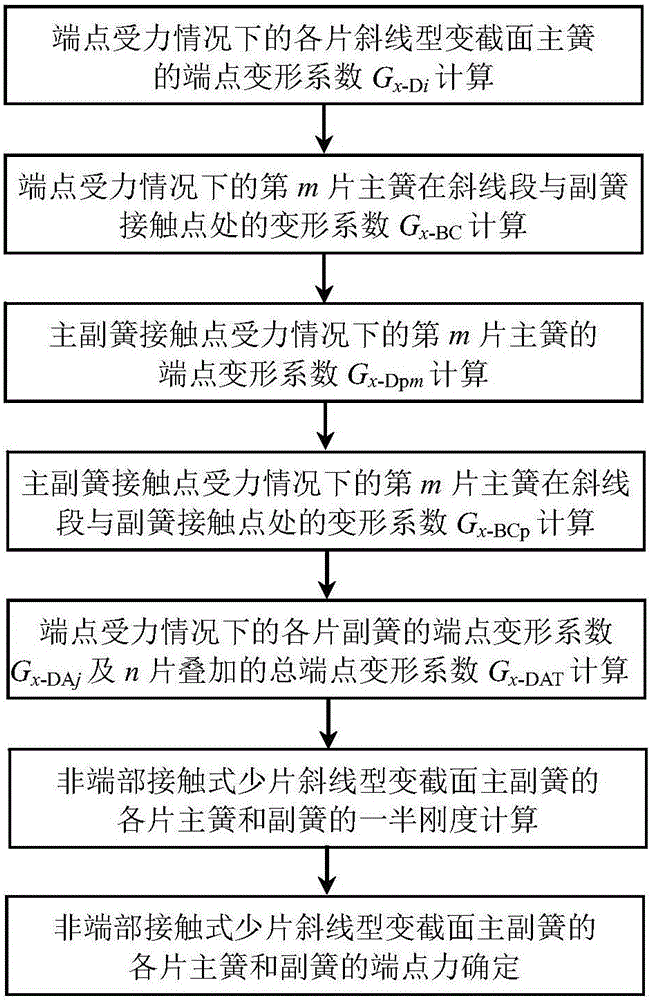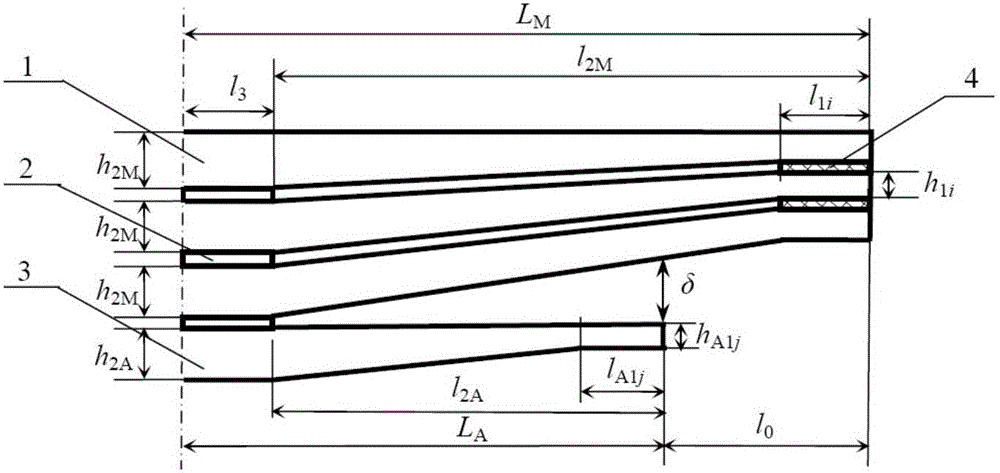Method for determining end point force of main and auxiliary springs of non-end contact, few-leaf diagonal and cross-section variable type
A slash-shaped, variable-section technology, which is applied in special data processing applications, instruments, electrical digital data processing, etc., can solve the non-end-contact few-piece slash-shaped variable-section primary and secondary spring end force, Analyzing computationally complex issues
- Summary
- Abstract
- Description
- Claims
- Application Information
AI Technical Summary
Problems solved by technology
Method used
Image
Examples
Embodiment
[0057] Embodiment: Half of the installation pitch of a non-end contact type few-piece slanted-line variable-section main spring 3 =55mm, width b=60mm, modulus of elasticity E=200GPa, gap between primary and secondary springs δ=18.75mm; among them, number of main reeds m=2, half length L of each main spring M =575mm, the distance from the root of the oblique line section of the main spring to the end point of the main spring l 2M =L M -l 3 =520mm, the thickness h of the straight section at the root of each main spring 2M =11mm; Thickness h of the straight section at the end of the first main spring 11 = 7mm, the thickness ratio of the oblique line section of the first main spring to β 1 =h 11 h 2M =0.64; Thickness h of the straight section at the end of the second main spring 12 = 6mm, the thickness ratio of the oblique line section of the second main spring to β 2 =h 12 h 2M = 0.55. Number of secondary reeds n=1, half length L of secondary reeds A =375mm, the dista...
PUM
 Login to View More
Login to View More Abstract
Description
Claims
Application Information
 Login to View More
Login to View More - R&D
- Intellectual Property
- Life Sciences
- Materials
- Tech Scout
- Unparalleled Data Quality
- Higher Quality Content
- 60% Fewer Hallucinations
Browse by: Latest US Patents, China's latest patents, Technical Efficacy Thesaurus, Application Domain, Technology Topic, Popular Technical Reports.
© 2025 PatSnap. All rights reserved.Legal|Privacy policy|Modern Slavery Act Transparency Statement|Sitemap|About US| Contact US: help@patsnap.com



